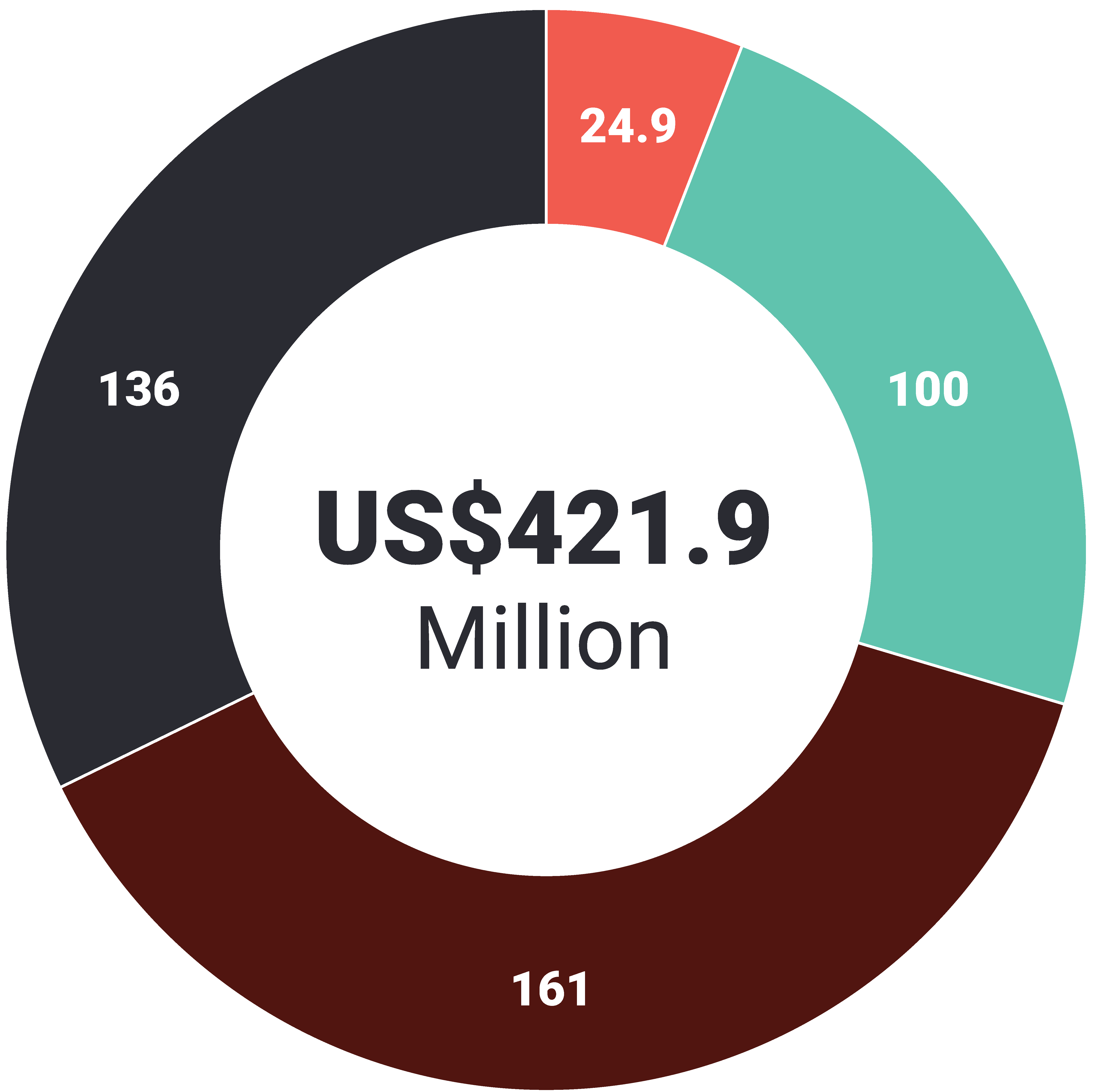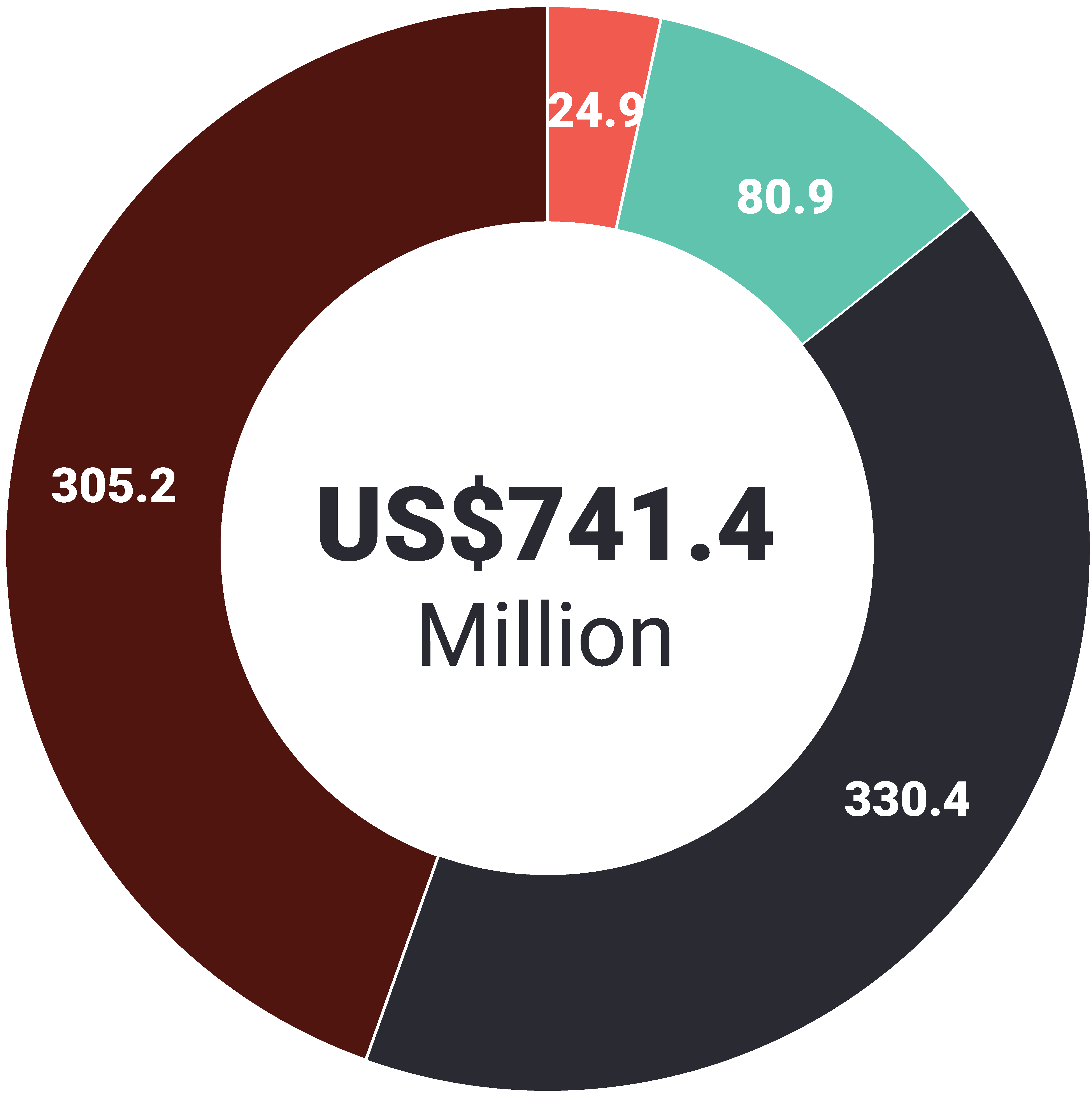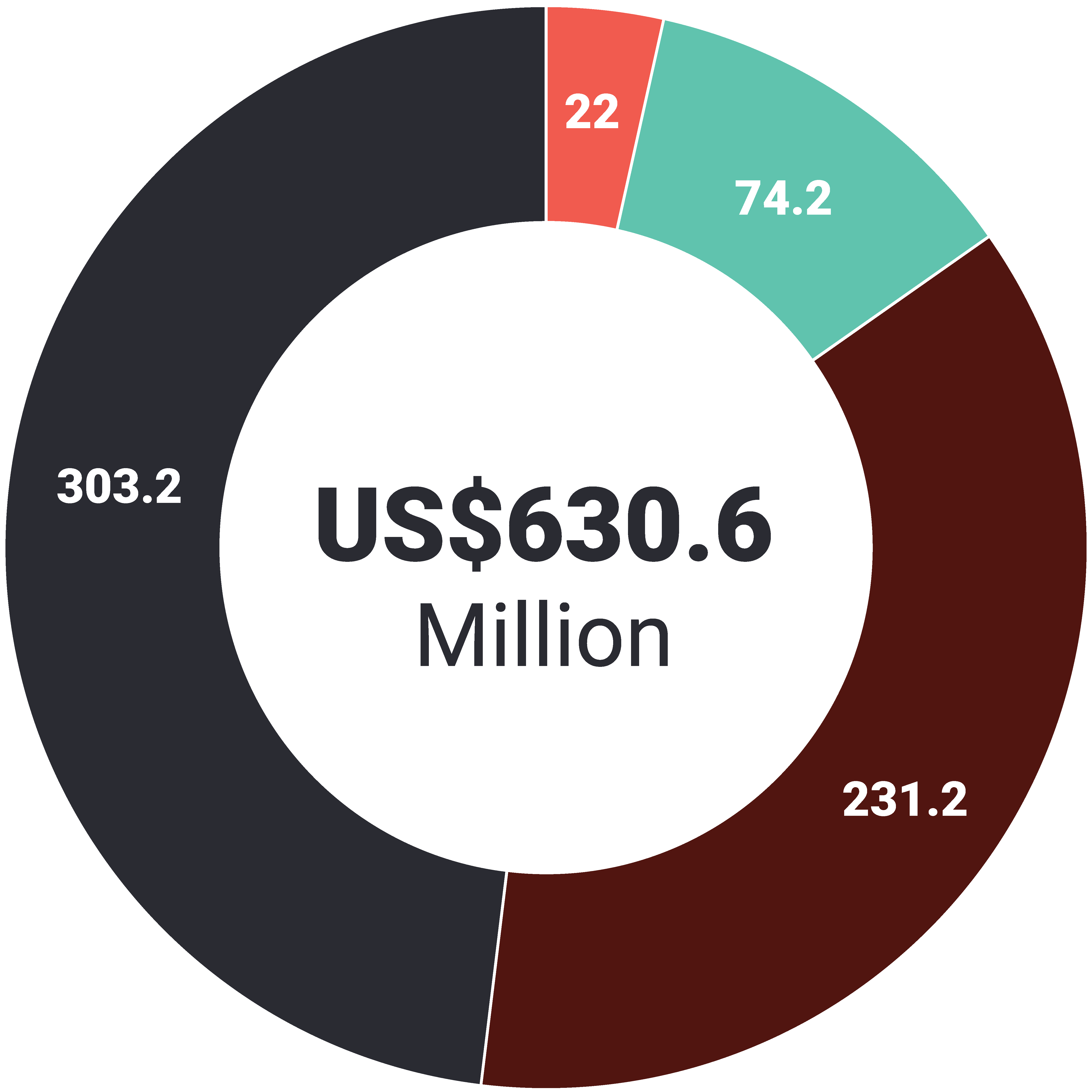
Message from the Executive Director


UN Under-Secretary-General and UNEP Executive Director
In many ways, 2022 was the year of renewed vigour on environmental action. Towards the beginning of the year, at the fifth United Nations Environment Assembly, Member States adopted landmark resolutions to ramp up efforts to curb pollution, mitigate and adapt to climate change, and protect and restore nature worldwide. The 2022 UN Climate Change Conference delivered a historic moment with the creation of a loss and damage fund. Global negotiations to end plastic pollution got off the ground in Uruguay. The UN General Assembly recognized the universal right to a clean, healthy and sustainable environment. And, as the year ended, the UN Biodiversity Conference in Montreal saw the adoption of an ambitious framework to protect and revive biodiversity by 2030. This year also marked the 50th anniversary of the UN Environment Programme (UNEP) and the Stockholm+50 conference.
Yet it was also a year of extreme hardship. The devastating impacts of the triple planetary crisis of climate change, nature and biodiversity loss, and pollution and waste were compounded by widening inequality, the war in Ukraine and rising food and energy prices. As always, the poor and vulnerable were hit hardest by the droughts, floods, wildfires, dwindling biodiversity and surging pollution levels.
It is little wonder, then, that demands for action rather than promises are growing louder. UNEP enhanced efforts to respond to these crises and started delivering on its 2022-2025 strategy. Drawing upon the strength of its partnerships, UNEP worked with Member States to make good on promises to mitigate and adapt to climate change, protect and restore ecosystems and reduce the burden of pollution. In all these, UNEP continues to support countries in implementing UN Environment Assembly resolution 4/17 by embedding gender equality and human rights in environmental policies, strategies, programmes and projects, even as it works towards restructuring its gender architecture to better meet this mandate.
At the organizational level, UNEP is committed to becoming a more agile, responsive organization. UNEP reshaped its approach to engaging with sister agencies in UN Country Teams to better address Member State priorities and the Sustainable Development Goals, and created three new thematic funds that provide flexible financing to drive progress on climate stability, living in harmony with nature and moving towards a pollution-free planet. UNEP also reached gender parity at all professional and above levels and improved the geographic diversity of its workforce.
But much work lies ahead to slow the triple planetary crisis. As the leading global environmental authority, UNEP will push ever harder and cooperate more closely with countries, the UN system, civil society and the private sector to deliver solutions and work towards a world where all people, everywhere, can enjoy their right to a healthy environment.
UNEP by the numbers
The amount by which plastics flowing into the ocean could be reduced through circular economy measures, including under the deal to tackle plastic pollution nations began negotiating in 2022.
The number of concrete targets to be met by 2030 under the new Kunming-Montreal Global Biodiversity Framework.
The additional global warming that may be avoided by the Montreal Protocol by protecting carbon sinks from ultraviolet radiation.
The total number of people expected to benefit from UNEP’s ecosystem-based adaptation work.
The equivalent number of cars that will be taken off the road each year by emissions cuts delivered through UNEP-supported efficient lighting work in Pakistan and Indonesia.
The quantity of debris recovered and sorted in Mosul by a new UNEP-backed recycling centre.
The number of people engaged during World Environment Day.
The fifth UN Environment Assembly

Multilateralism delivered high-impact outcomes at the resumed second session of the fifth UN Environment Assembly (UNEA 5.2), which took place in February in Nairobi.
The political declaration of UNEA 5.2 – an event attended by more than 3,400 in-person and 1,500 online participants – emphasized the urgent need to halt the decline of biodiversity and the fragmentation of habitats. Resolutions on nature covered issues such as biodiversity and health, sustainable lake management, and a universal definition of nature-based solutions. Resolutions on resilient infrastructure, a greener recovery from COVID-19 and the environmental aspects of minerals and metals management reinforced the importance of circular economies.
Big strides were made on chemicals, waste and pollution. The resolution to start negotiating a deal on ending plastic pollution plugs a critical gap in environmental action. While the resolution to establish a science-policy panel on the sound management of chemicals and waste, and prevent pollution, will give these critical issues a scientific body similar to those for climate (the Intergovernmental Panel on Climate Change) and biodiversity (the Intergovernmental Science-Policy Platform on Biodiversity and Ecosystem Services).
UNEA also held a special session to commemorate UNEP’s 50th anniversary and take stock of the fruits of environmental multilateralism over the past five decades. Heads of State and delegations from 175 countries issued a landmark declaration strengthening their commitment to environmental action. They paid tribute to UNEP’s work, which has delivered successes such as protecting the ozone layer and phasing out leaded petrol.
The planet was already showing signs of buckling under the weight of humanity back in 1972 when the agency was founded. In the following decades, UNEP and its partners would work with Member States to combat air pollution, restore the ozone layer, protect the world’s seas, promote a green and inclusive economy, and raise the alarm about biodiversity loss and climate change. That work has never been more important.
Planetary Action

Climate action
Nature action

The resolution will help reduce environmental injustices, close protection gaps and empower people, especially those that are in vulnerable situations, including environmental human rights defenders, children, youth, women and indigenous peoples.
UN Secretary-General António Guterres

UNEP gave Sir David Attenborough the Champions of the Earth Lifetime Achievement Award for his dedication to research, documentation and advocacy for the protection of nature and its restoration.

UNEP unveiled Aquaman star and ocean activist Jason Momoa as the new Advocate for Life Below Water at the UN Ocean Conference.
Chemicals & Pollution action
Expanding UNEP's reach

Geographic representation and gender parity
UNEP has created a human resources outreach strategy to increase the organization’s visibility as an employer of choice for young talent from underrepresented Member States and less-represented regional groups. There has also been progressive improvement in regional group diversity. In 2022, there was an overall increase (compared to 2021) of over 35 per cent in the selection of candidates from less represented regional groups for positions in the Professional and above categories. Within that context, the professional and above categories saw an increase – between January and December 2022 – of approximately 10 per cent of staff from Latin America and the Caribbean, 12 per cent of staff from the Asia Pacific Group, and approximately 20 per cent of staff from the Eastern European Group. In 2022, UNEP met or exceeded the UN target range on gender balance (47-53 per cent) at all professional and above levels.
Thematic funds
UNEP created three thematic funds to provide flexible financing to support delivery of the Medium-Term Strategy (2022-2025) objectives of climate stability, living in harmony with nature and moving towards a pollution-free planet. US$14 million was raised for the funds in 2022.
The thematic funds will complement UNEP’s Environment Fund and help shift the balance away from earmarked funding of individual projects towards thematic funding for bigger impact. Contributions from public and private partners to the thematic funds will facilitate a comprehensive, science-based approach, which should help fortify UNEP’s role as the global environmental authority and enable the organization to better support Member States.
Private sector engagement
UNEP has made the strategic decision to move toward cross-sector and multi-sector alliances and initiatives in high-impact industries. UNEP is engaging with private sector entities through more than 40 initiatives focused on energy, plastics, food and agriculture, healthcare, finance and information technology. UNEP’s science supports businesses to find better solutions. For instance, UNEP’s Partnership for Clean Fuels and Vehicles – a public-private initiative of 73 partners promoting cleaner fuels and vehicles in developing countries and emerging economies – helped to end the use of leaded petrol.
Another example is UNEP’s Global Tourism Plastics Initiative (GTPI). The initiative has 121 signatories, with a combined estimated annual revenue of over US$43 billion. In 2021 and 2022, GTPI organized a pilot reporting campaign for large companies that joined the initiative in 2020 and for which annual reporting is mandatory. Some 108 million plastic items have been removed from use across the reporting businesses.
Digital transformation
The Coalition for Digital Environmental Sustainability (CODES) – a UN-backed coalition of 1,000 stakeholders – was launched during Stockholm+50 to support the application of digital technologies to address the triple planetary crisis. CODES aims to increase the number of countries and companies collaborating to implement joint action plans under the UN Secretary General’s Roadmap for Digital Cooperation.
FUNDING
2022 Financial Status as at 31 December 2022 (US$ Millions)
Budget

Income

Expenditure

- UN Regular Budget
- Environment fund
- Earmarked funds
- Global funds
Top-15 Earmarked contributions in 2022 (US$ millions)
| Global Environment Facility | 321.5 |
| Germany | 52.0 |
| UN organisations | 34.6 |
| Sweden | 30.3 |
| Multilateral Fund (Montreal Protocol) | 22.6 |
| USA | 22.5 |
| European Commission | 21.2 |
| Norway | 21.1 |
| UNEP Finance Initiative* | 18.5 |
| Foundations / NGOs | 15.0 |
| Switzerland | 11.8 |
| United Kingdom | 9.9 |
| Green Climate Fund | 8.8 |
| Denmark | 8.7 |
| Canada | 5.5 |
Top-15 Environment Fund contributors in 2022 (US$ millions)
| Netherlands | 8.4 |
| Germany | 7.9 |
| France | 7.6 |
| USA | 7.6 |
| Norway | 7.0 |
| Denmark | 6.5 |
| Sweden | 5.1 |
| United Kingdom | 4.5 |
| Belgium | 4.2 |
| Switzerland | 4.0 |
| Italy | 3.3 |
| Finland | 2.7 |
| Canada | 2.5 |
| Japan | 1.5 |
| China | 1.4 |
-
*
Partnership between UNEP and the global financial sector to mobilize private sector finance for sustainable development.
Contributors to Environment Fund (2022) by category (number of Member States)

- Full share contributors (44)
- Other contributors (38)
- Non-contributors (111)
This publication may be reproduced in whole or in part and in any form for educational or non-profit purposes without special permission from the copyright holder provided acknowledgment of the source is made. The United Nations Environment Programme would appreciate receiving a copy of any publication that uses this publication as a source. No use of this publication may be made for resale or for any other commercial purpose whatsoever without prior permission in writing from the United Nations Environment Programme. The designation of geographical entities in this report, and the presentation of material herein, do not imply the expression of any opinion whatsoever on the part of the publisher or the participating organizations concerning the legal status of any country, territory or area, or of its authorities, or concerning the delimitation of its frontiers or boundaries. Credits: Unless otherwise indicated, all data in this publication have been sourced from the United Nations Environment Programme. For more information: unep.org/annualreport.
© United Nations Environment Programme, 2023



















